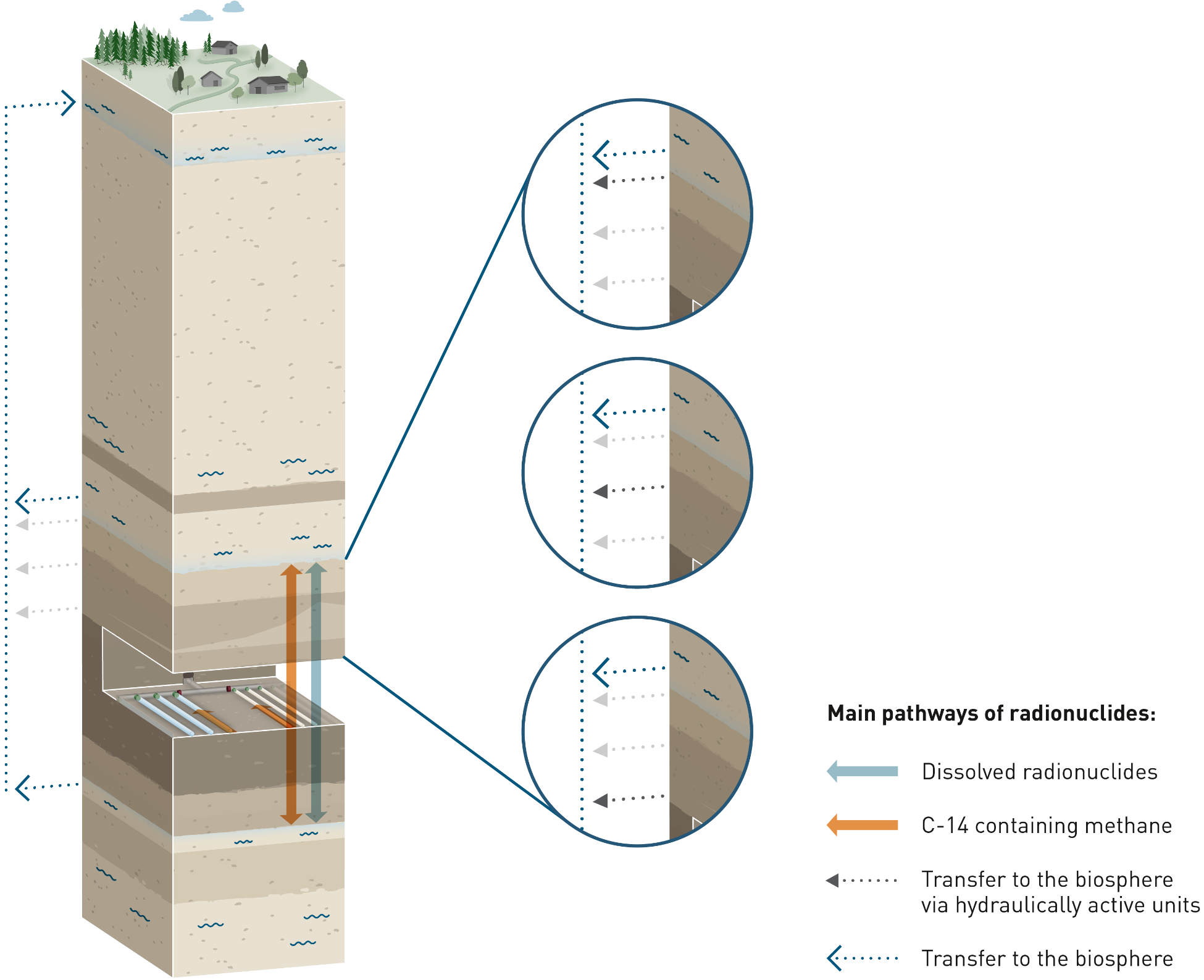As for the reference safety scenario, we consider the abstraction of the stratigraphic units as illustrated in Sections 5.2.1 and 7.2.2. In line with the geological evidence, the reference safety scenario considers no hydraulically active units within the CRZ. In contrast, in this alternative safety scenario, it is assumed that one of the confining geological units above (variant one) or below the Opalinus Clay (variant two) is hydraulically active. This might be due, e.g., to fractures within the thin, competent “hard beds” (see Section 5.2) having a higher degree of connectivity than currently understood. There are three potentially hydraulically active units within the upper confining geological units, namely Calcareous Malm (CM), Calcareous Dogger (CD), and Sandy-Calcareous Dogger (SCD), and two in the lower confining geological units, denoted by KEU, comprising Argillaceous Keuper and Calcareous Lias, and KAU, comprising Dolomitic and Argillaceous Keuper. In the calculation cases for this alternative safety scenario, each of the above-named units is considered, in turn, to be hydraulically active, while the remainder are inactive, leading to five calculation cases in all (AS-HA/xxx, with xxx being CM, CD, SCD, KEU and KAU).
The assumed hydraulically active unit is conceptualised so as to provide a horizontally connected advective pathway to the regional aquifer. In each of the calculation cases, radionuclides reaching the hydraulically active confining unit can either be transported vertically across them, predominantly by diffusion, or be diverted into the units, in which case they are assumed to be conveyed instantaneously to the biosphere (see Fig. 7‑4). Any 14C reaching a hydraulically active unit in the form of gaseous methane is assumed to dissolve. The fractional distribution of radionuclides continuing vertically or being horizontally diverted is calculated based on flow rates and hydraulic gradients (see e.g., Section B.1.1. in NTB 24-18, Nagra 2024p for details).

Fig. 7‑4:Main pathways for radionuclide transport where it is assumed that one of the confining geological units above or below the Opalinus Clay is hydraulically active and connected to the regional aquifer and thus provides an additional pathway for the advective transport of radionuclides to the biosphere

